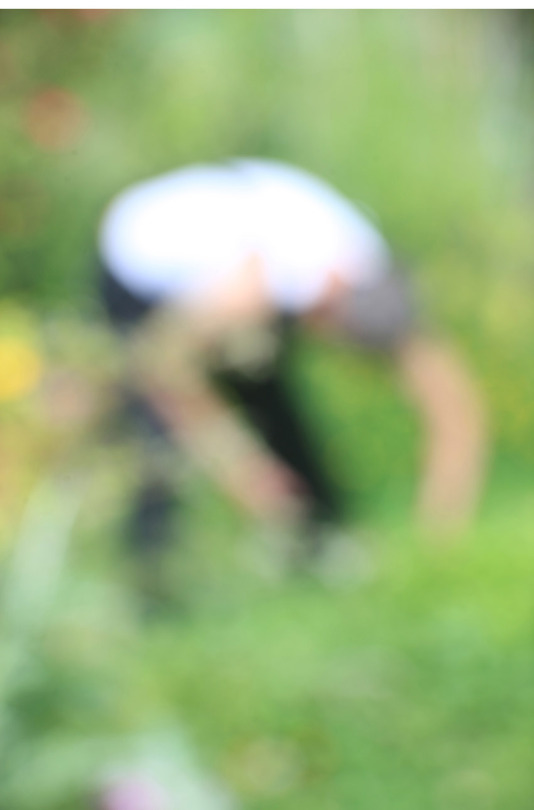BY PETER WATERSCHOOT

© Michel Vaerewijck, ‘Doriane’, 2015
Limits of reason. Fleeting time. Think about digital snapshots sedimenting the bottom of our hard disks; photography gets lost. Unless you go through meticulous archiving. The personal need for a slower photographical approach while rendering the photographical object more valuable for long lasting preservation, propelled Michel Vaerewijck into unica glass plate photography. His unica oeuvre consists of poetic, dreamlike images with floral motives and lingering nudes; an approach associable with e.g. Balthasar Burkhard, an investigation in the causational nature of things.

© Michel Vaerewijck, ‘Ash’, 2015

© Michel Vaerewijck, from the series ‘Sharpness is a lie’
Gradually however, with a quest for substance as a strong driving force, Michel Vaerewijck transcends ‘medium’ as well as ‘subject’. That is to say; it is actually rather more ‘the span’ of the 10 brief minutes in which the silvernitrate migrates into the light-sensitive fluid, which becomes more and more -the true subject- of Michel Vaerewijck’s photography. The axis around which this artist’s field of investigation namely revolves, has become the ‘tapping’ of the intangible itself; a chemically bridged connection between our ‘selves’ and the incomprehensible and multifaceted nature of every personal experience. Point of View: this world and its fleeting time.


© Michel Vaerewijck, from the series ‘Sharpness is a lie’
The glass plates however, do not allow any adding, altering or deleting; light is immediately transformed into matter and structure, which obliges Michel Vaerewijck to plan and prepare his settings, in a strong interaction with his models in order to be fully ready to ‘catch’ their presence in the studio, the gift of their openness, and their action in pose. All while a reflection of light crosses the calm of the dark. A shared communion. A splinter in time. How the photographer relates to the models is of utmost importance here, because it takes repetition, trust and patience to plunge into the world of the dark studio and embark on a mutual research, which is: balancing the model’s input with the photographer’s imagination and expectation.


© Michel Vaerewijck, from the series ‘Sharpness is a lie’
Temporary Vessels. The approach in Michel Vaerewijkck’s oeuvre reveals a philosophical and very human concern. Throughout the oeuvre runs a craving for connection. Michel Vaerewijck has been trained as an engineer and thus has learnt to understand the world as calculable. In his art however, he expresses his insecurities and his intuitive questions on the friction between physics and metaphysics. Most of Michel Vaerewijck’s works are hinting on erotic ‘pulsion’. Some of Michel Vaerewijck’s nudes might be perceived as being at the edge of the pornographic, but, they absolutely aren’t. On the contrary, when looking at the glass plate nudes, you feel as if you were vaguely stroked by love; an intellectual approach on love, transcending materialistic urges. The solitary splendour of the one body (yet perfect always imperfect) seems to remind us of the beauty that lies in creation of forms and ideas. These platonic studio-works present themselves as, one might say, ‘excited contemplations’. The bodies are depictions of temporary vessels carrying sheer vulnerability. The camera descends into the flesh as if it röntgens for the model’s soul, defining the idea of a poetic action; dealing with the unfathomable, the ephemeral within reality. The artist creates the opportunity for the ‘shapeless’ to take shape, and through the mold of careful selection, he makes them accord to his views and ideas, after which -with most sacred gesture and respect- he places these selections in a gallery or art space, where they are meant to connect with the viewers’ psyche. Which establishes a (to his oeuvre very important) triangular relation; specifically: subject-photographer / photographer-viewer / viewer-subject.

© Michel Vaerewijck, from the series ‘Sharpness is a lie’
Sharpness is a lie. Michel Vaerewijck, 2014-2015 –had-, (past tense!) made a clear distinction between analogue photography and digital creation. Digital photography he thought to be a fantastic medium far more resembling to painting or sculpting, nevertheless less suitable for expressing layers of thought and emotion. But! Michel Vaerewijck chose to investigate and to prove himself wrong on this matter. With previous concerns as good guidance, he presents us now, a not so very unlogical shift in method. In his most recent work he really surprises us with a digital U-turn. But, notably, a turn which is in fact a logical continuation of his long-lasting analogue quest. In ‘My father is a Gardener’: (an autobiographical and very personal series), Michel Vaerewijck presents us with introspective and reflective motives using color concept, a digital camera and a customized lens. The lens comes in as most important here. The diffracting lense gives him the opportunity to redirect the registration from the so called ‘visible’ to the non-direct-perceivable.

© Michel Vaerewijck, ‘SPIEGEL im SPIEGEL
As Michel Vaerewijck puts it himself: “sharpness is a lie”. These images do not only mask but also accentuate the encapsulated information. The spectator is engaged to connect the dots, and thus becomes drawn into the image’s subliminal communication.
Hence, once again, the photographer reaches his aim in expressing his ultimate desire, namely: connecting with the world, and connecting with the viewer.
“We always want to figure things out, but in the process we get swallowed”.